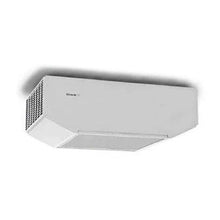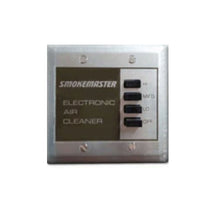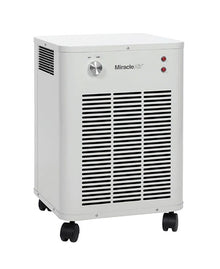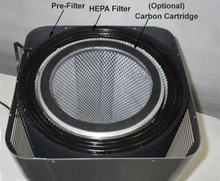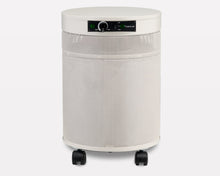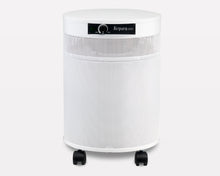Beyond the Ashtray: The Ultimate Guide to Protecting Furniture From Cigar Smoke
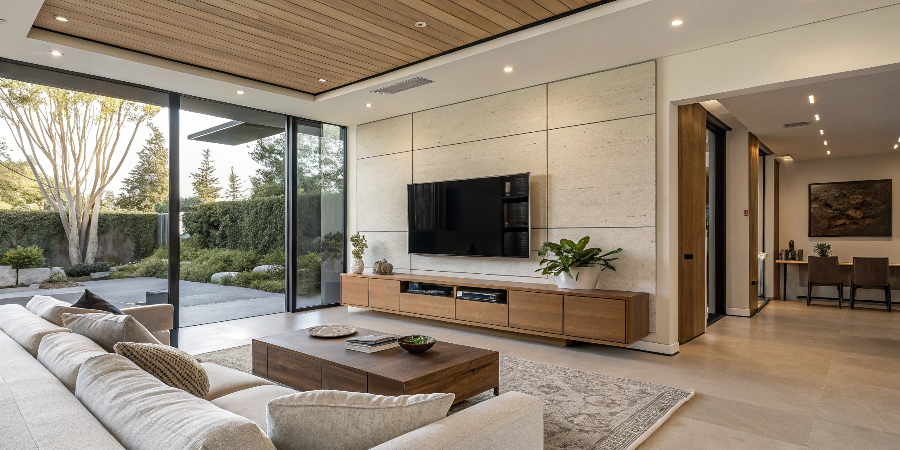
By the Team at Commercial Air Purifiers Published: October 10th, 2025
There are few rituals as relaxing as settling into a comfortable chair with a fine cigar. It’s a moment of pause, a personal luxury. Yet, the aftermath of that enjoyment can be a persistent and damaging problem: the stubborn, oily residue and invasive odor that clings to everything in the room. Your prized leather armchair, your handsome wooden bookshelf, and your upholstered sofa can all become casualties, absorbing the smoke and slowly developing a sticky, discolored film and a smell that seems impossible to remove.
Many people believe this is simply the price of enjoying cigars indoors. But it doesn't have to be. Protecting your furniture and preserving the air quality of your personal sanctuary is entirely possible with a proactive, multi-layered strategy. This guide will walk you through the science of smoke residue, why it's so damaging, and provide a comprehensive action plan to keep your furniture looking and smelling as good as new.
The Real Enemy: Understanding Thirdhand Smoke Residue
The problem you're fighting isn't just the visible smoke you see in the air; it's what the smoke leaves behind. This lingering, toxic residue is known as thirdhand smoke (THS). Unlike secondhand smoke, which is inhaled directly, thirdhand smoke consists of the pollutants from tobacco smoke that settle and stick to surfaces.
When a cigar burns, it releases a complex cocktail of chemicals and particulate matter, including nicotine, tar, and numerous volatile organic compounds (VOCs). These substances don't just vanish when the smoke clears. They form a sticky, yellowish-brown residue that bonds with virtually every surface it touches—from walls and carpets to the fibers of your sofa and the finish on your coffee table.
According to the Centers for Disease Control and Prevention (CDC), this residue isn't inert. It can react with other common indoor pollutants to create new, even more harmful compounds over time. Research from institutions like the Mayo Clinic highlights that exposure to thirdhand smoke can occur through inhalation, ingestion, or skin contact, posing a long-term health risk to anyone using the room, even hours or days later. For your furniture, this means a gradual degradation of materials, permanent staining, and an embedded odor that can significantly reduce its value and lifespan.
A Multi-Layered Defense: Your Strategy for Complete Protection
To effectively protect your furniture from the onslaught of cigar smoke, you can't rely on a single solution. You need a three-pronged approach that involves preparing your room, actively managing the air, and consistent cleaning.
Layer 1: Strategic Room and Furniture Preparation
The first step is to create an environment that is inherently more resistant to smoke damage. This involves making smart choices about the materials and layout of your smoking space.
-
Prioritize Non-Porous Surfaces: The single biggest factor in how well a material withstands smoke is its porosity.
-
Excellent Choices: Furniture made from finished wood, leather, vinyl, metal, and glass are far easier to protect and clean. The smoke residue tends to sit on the surface rather than being absorbed deep within the material.
-
Challenging Materials: Porous materials like fabric upholstery (cotton, linen, wool), unfinished wood, drapes, and carpets act like sponges for smoke particles and odors. The residue becomes deeply embedded in the fibers, making it extremely difficult to remove.
-
-
Use Protective Coverings: If you have upholstered furniture in your smoking room, the most effective and practical solution is to use high-quality, washable covers. Throws, blankets, and custom-fitted slipcovers can be placed on furniture before a smoking session and then removed and laundered afterward. This prevents the primary smoke exposure from ever reaching the upholstery itself.
-
Strategic Furniture Placement: Try to create a dedicated smoking zone within the room. Place your ashtray and primary smoking chair in an area with the best ventilation and keep more vulnerable, porous furniture pieces as far away as possible.
Layer 2: Active Air Management – Your Most Powerful Weapon
While preparing your surfaces is a crucial first step, the most impactful part of your strategy is to control the smoke in the air before it has a chance to settle on your furniture. This is achieved through a powerful combination of ventilation and purification.
The Role of Ventilation
Your goal is to exhaust as much of the smoke as possible, as quickly as possible, directly to the outside. Simply cracking a window is not enough; it doesn't create the directional airflow needed and can even cause smoke to be pulled back into other parts of the house. A dedicated, high-power exhaust fan, properly ducted to the exterior, is a critical tool. It begins the process of smoke removal immediately.
The Critical Role of High-Performance Air Purification
Ventilation is a great start, but it can't capture everything. Smoke disperses incredibly quickly, and a significant portion will remain in the room's air, circulating and waiting to land on your furniture. This is where a high-performance air purifier becomes the cornerstone of your defense. It acts as an in-room filtration system, constantly pulling in contaminated air, stripping out the pollutants, and releasing clean air.
For the intense challenge of cigar smoke, not just any air purifier will do. You need a system specifically engineered to handle both the solid particles and the gaseous chemicals.
-
For the Solid Particles (Soot and Tar): Cigar smoke is filled with fine and ultrafine particulate matter. A machine with a True HEPA filter is essential for capturing these particles. HEPA filters are certified to remove 99.97% of airborne particles at 0.3 microns, trapping the elements that cause surface grime and respiratory irritation.
-
For the Gases and Oily Vapors (The Smell and Sticky Residue): This is the most critical part. The characteristic cigar odor and the sticky, oily film are caused by a dense cloud of VOCs and chemical gases. A HEPA filter cannot capture these. You need a purifier with a substantial bed of activated carbon. Systems with deep-bed activated carbon filters, often containing several pounds of this material, are designed to adsorb the heavy chemical load from tobacco smoke, effectively neutralizing the odors and capturing the vapors that would otherwise form a residue on your furniture.
Layer 3: Understanding Power and Sizing – Why CFM is King
To keep up with the constant stream of pollutants from a cigar, an air purifier needs to be powerful enough to clean the entire volume of air in the room multiple times per hour. The key metric for this is CFM (Cubic Feet per Minute), which measures the volume of air the unit can process.
A higher CFM allows you to achieve a higher number of Air Changes per Hour (ACH). For a room where cigars are smoked regularly, you should target a minimum of 6 to 8 ACH to ensure the smoke is captured before it has time to settle and saturate your belongings.
Here’s how to calculate the CFM you need:
-
Calculate your room's volume: Length (ft) x Width (ft) x Height (ft) = Volume (in cubic feet).
-
Determine your required air movement: Room Volume x Target ACH = Total Cubic Feet per Hour.
-
Convert to CFM: Total Cubic Feet per Hour / 60 Minutes = Required CFM.
Example: For a 15' x 20' room with an 8' ceiling:
-
Volume = 15 x 20 x 8 = 2400 cubic feet.
-
For 8 ACH, you need: 2400 x 8 = 19,200 cubic feet per hour.
-
Required CFM = 19,200 / 60 = 320 CFM.
You would need to look for an air purifier with a smoke CADR (Clean Air Delivery Rate) or a CFM rating of at least 320 to effectively protect this space.
Your Proactive Protection Plan: A Step-by-Step Summary
Consolidating these strategies gives you a clear and actionable plan.
-
Prepare Your Surfaces: Choose non-porous furniture when possible. For existing fabric furniture, use washable slipcovers or throws during smoking sessions.
-
Install Powerful Exhaust Ventilation: Use a dedicated exhaust fan to pull smoke directly out of the room and vent it outside.
-
Invest in a Right-Sized, High-Performance Air Purifier: This is your most important tool. Ensure it has both a True HEPA filter and, most importantly, a deep bed of activated carbon. Calculate your required CFM to achieve at least 6-8 ACH. Investing in specialized Smoke & Odor Control Systems ensures you get the industrial-grade technology needed for this task.
-
Clean Immediately After Smoking: As soon as you are finished, take a microfiber cloth lightly dampened with a cleaning solution (appropriate for the surface) and wipe down all hard surfaces like tables, shelves, and leather chairs. This removes the fresh residue before it has time to cure and bond.
-
Maintain Your Systems: Launder your protective coverings regularly. Clean your exhaust fan and, most critically, replace the filters in your air purifier according to the manufacturer's recommendations for a heavy-use environment.
For dedicated smoking lounges or rooms, creating a Negative Pressure Smoking Room is the ultimate containment strategy, preventing any smoke or odor from escaping into the rest of your home or building.
Preserve Your Investment and Your Air
Enjoying a cigar in the comfort of your own space shouldn’t mean sacrificing your furniture or your indoor air quality. By moving from a reactive mindset of cleaning up old smells to a proactive strategy of surface preparation and aggressive air management, you can effectively prevent the damaging effects of thirdhand smoke. A robust defense keeps your furniture pristine, eliminates lingering odors, and creates a healthier, more pleasant environment for everyone.
Don't let smoke residue dictate the life of your furniture. If you need help selecting the right air control solution for your space, contact our specialists for expert guidance.
Frequently Asked Questions (FAQ)
Q1: Does leather furniture absorb cigar smoke? Finished leather is semi-porous and far more resistant to smoke than fabric. The residue tends to sit on the surface, and the odor is less likely to become permanently embedded. However, it still requires regular cleaning after smoking sessions to wipe away the oily film and prevent long-term damage to the finish. Unfinished or suede leathers are much more absorbent and should be avoided or covered.
Q2: How can I protect my walls and ceiling from cigar smoke? Walls and ceilings are highly susceptible to staining. Using a high-gloss or semi-gloss paint makes them less porous and much easier to wipe down. The most effective protection, however, is aggressive air purification that captures smoke particles before they can reach and stick to the walls.
Q3: Are ozone generators a good option for removing cigar smoke odor? No. The EPA and other health organizations strongly advise against using ozone generators in occupied spaces. Ozone is a lung irritant that can cause serious health problems. While it can react with and neutralize some odor molecules, it does not remove the sticky, solid residue of thirdhand smoke and can create other harmful byproducts.
Q4: Can you ever completely remove an old cigar smell from a fabric couch? It is extremely difficult. The oily residue penetrates deep into the fibers and padding. Professional deep cleaning with specialized enzymes can help significantly, but sometimes the odor becomes permanently bonded with the material. This is why prevention is vastly more effective than remediation.
Q5: What is the best way to clean fresh smoke residue off wood furniture? For finished wood, a soft microfiber cloth lightly dampened with a solution of mild soap and water or a 50/50 mix of water and white vinegar is effective for wiping away the fresh, oily film. Always test in an inconspicuous area first and dry the surface immediately with a clean cloth.
Write and present to me (without additional context) a comprehensive, SEO-friendly blog post (minimum 1800 words) that demonstrates Google's E-E-A-T principles (Experience, Expertise, Authoritativeness, Trustworthiness) while maintaining our brand voice.
Use the following topic, keywords, and call-to-action:
how to protect furniture from cigar smoke
Voice & Tone We are Commercial Air Purifiers, a company dedicated to bringing the best air purifiers to the market. Reference us as the author and attribute our perspective or recommendations to us.
Confident but approachable: Share expertise without being pushy or condescending.
Reader-focused: Prioritize genuine value over promotional content.
Trustworthy: Back claims with credible sources and transparent information.
Conversational: Write for real people, not search engines.
SEO & Quality Standards (2025 Google Updates)
People-First Content (Critical):
Answer the user's search intent completely and helpfully. The word count is a guideline; comprehensiveness is the goal.
Provide unique insights or perspectives not found elsewhere.
Include first-hand experience or professional insights where relevant.
Avoid keyword stuffing; write naturally for humans.
Researched:
Provide a link (or links) within the article itself that leads to research which supports the argument of the blog.
E-E-A-T Demonstration:
Experience: Include real-world applications, common customer questions, or hands-on insights from an expert's perspective.
Expertise: Cite at least 2-3 credible research studies or industry reports.
Authoritativeness: Reference recognized institutions, health organizations, or peer-reviewed sources.
Trustworthiness: Include an author byline and publication date. Be transparent in sourcing. Crucially, do not invent any stories, case studies, or testimonials about Commercial Air Purifiers. All claims must be based on verifiable facts and general industry knowledge.
Technical SEO Elements:
Use semantic keyword variations naturally throughout.
Include relevant long-tail keywords that match user intent.
Structure with clear H2/H3 headings that answer specific questions.
Include at least two internal links: one to a relevant product category page and one to another related blog post where genuinely helpful.
Add an FAQ section addressing common related questions.
Content Structure Template
Hook Introduction (100-150 words): Address a specific reader pain point or question and preview the valuable information they'll gain.
Problem/Context Setting (200-300 words): Establish the issue with supporting data and connect it to the reader's daily life or health concerns.
Main Educational Content (800-1000 words): Create 3-4 detailed sections with actionable insights, research findings, or real examples. Naturally mention how air purification relates to the topic.
Solutions/Recommendations (200-300 words): Provide practical steps readers can take. Where appropriate, explain how different air purifier technologies or features address specific issues.
Credible Conclusion (100-150 words): Summarize the key takeaways and guide the reader toward the Primary Call to Action (CTA).
Source Requirements
Cite at least 2-3 peer-reviewed studies or authoritative health sources (e.g., EPA, WHO, CDC, medical journals, universities).
Reference recent data (within the last 3-4 years when possible).
Include proper attribution and live links to the original sources.
Product Integration Guidelines
Mention air purifiers only when genuinely relevant to solving the reader's problem.
Focus on the science and technology behind how air purification works rather than direct sales pitches.
Use phrases like "Systems with robust activated carbon filters are designed to..." rather than direct promotion.
Use CFM as opposed to other measurements in the commercial air purification space
Formatting
The final output should be a clean, final draft. Exclude section headers like "Hook Introduction" and their word counts.
Include a compelling article title (formatted as a title) and use H2 and H3 headings for subtitles.
Do not provide any HTML code; standard word formatting is preferred.
Use formatting like bullet points or numbered lists sparingly. Only use them when they significantly improve readability for complex information, comparisons, or step-by-step instructions.
Beyond the Ashtray: The Ultimate Guide to Protecting Furniture From Cigar Smoke
By the Team at Commercial Air Purifiers Published: September 30, 2025
There are few rituals as relaxing as settling into a comfortable chair with a fine cigar. It’s a moment of pause, a personal luxury. Yet, the aftermath of that enjoyment can be a persistent and damaging problem: the stubborn, oily residue and invasive odor that clings to everything in the room. Your prized leather armchair, your handsome wooden bookshelf, and your upholstered sofa can all become casualties, absorbing the smoke and slowly developing a sticky, discolored film and a smell that seems impossible to remove.
Many people believe this is simply the price of enjoying cigars indoors. But it doesn't have to be. Protecting your furniture and preserving the air quality of your personal sanctuary is entirely possible with a proactive, multi-layered strategy. This guide will walk you through the science of smoke residue, why it's so damaging, and provide a comprehensive action plan to keep your furniture looking and smelling as good as new.
The Real Enemy: Understanding Thirdhand Smoke Residue
The problem you're fighting isn't just the visible smoke you see in the air; it's what the smoke leaves behind. This lingering, toxic residue is known as thirdhand smoke (THS). Unlike secondhand smoke, which is inhaled directly, thirdhand smoke consists of the pollutants from tobacco smoke that settle and stick to surfaces.
When a cigar burns, it releases a complex cocktail of chemicals and particulate matter, including nicotine, tar, and numerous volatile organic compounds (VOCs). These substances don't just vanish when the smoke clears. They form a sticky, yellowish-brown residue that bonds with virtually every surface it touches—from walls and carpets to the fibers of your sofa and the finish on your coffee table.
According to the Centers for Disease Control and Prevention (CDC), this residue isn't inert. It can react with other common indoor pollutants to create new, even more harmful compounds over time. Research from institutions like the Mayo Clinic highlights that exposure to thirdhand smoke can occur through inhalation, ingestion, or skin contact, posing a long-term health risk to anyone using the room, even hours or days later. For your furniture, this means a gradual degradation of materials, permanent staining, and an embedded odor that can significantly reduce its value and lifespan.
A Multi-Layered Defense: Your Strategy for Complete Protection
To effectively protect your furniture from the onslaught of cigar smoke, you can't rely on a single solution. You need a three-pronged approach that involves preparing your room, actively managing the air, and consistent cleaning.
Layer 1: Strategic Room and Furniture Preparation
The first step is to create an environment that is inherently more resistant to smoke damage. This involves making smart choices about the materials and layout of your smoking space.
-
Prioritize Non-Porous Surfaces: The single biggest factor in how well a material withstands smoke is its porosity.
-
Excellent Choices: Furniture made from finished wood, leather, vinyl, metal, and glass are far easier to protect and clean. The smoke residue tends to sit on the surface rather than being absorbed deep within the material.
-
Challenging Materials: Porous materials like fabric upholstery (cotton, linen, wool), unfinished wood, drapes, and carpets act like sponges for smoke particles and odors. The residue becomes deeply embedded in the fibers, making it extremely difficult to remove.
-
-
Use Protective Coverings: If you have upholstered furniture in your smoking room, the most effective and practical solution is to use high-quality, washable covers. Throws, blankets, and custom-fitted slipcovers can be placed on furniture before a smoking session and then removed and laundered afterward. This prevents the primary smoke exposure from ever reaching the upholstery itself.
-
Strategic Furniture Placement: Try to create a dedicated smoking zone within the room. Place your ashtray and primary smoking chair in an area with the best ventilation and keep more vulnerable, porous furniture pieces as far away as possible.
Layer 2: Active Air Management – Your Most Powerful Weapon
While preparing your surfaces is a crucial first step, the most impactful part of your strategy is to control the smoke in the air before it has a chance to settle on your furniture. This is achieved through a powerful combination of ventilation and purification.
The Role of Ventilation
Your goal is to exhaust as much of the smoke as possible, as quickly as possible, directly to the outside. Simply cracking a window is not enough; it doesn't create the directional airflow needed and can even cause smoke to be pulled back into other parts of the house. A dedicated, high-power exhaust fan, properly ducted to the exterior, is a critical tool. It begins the process of smoke removal immediately.
The Critical Role of High-Performance Air Purification
Ventilation is a great start, but it can't capture everything. Smoke disperses incredibly quickly, and a significant portion will remain in the room's air, circulating and waiting to land on your furniture. This is where a high-performance air purifier becomes the cornerstone of your defense. It acts as an in-room filtration system, constantly pulling in contaminated air, stripping out the pollutants, and releasing clean air.
For the intense challenge of cigar smoke, not just any air purifier will do. You need a system specifically engineered to handle both the solid particles and the gaseous chemicals.
-
For the Solid Particles (Soot and Tar): Cigar smoke is filled with fine and ultrafine particulate matter. A machine with a True HEPA filter is essential for capturing these particles. HEPA filters are certified to remove 99.97% of airborne particles at 0.3 microns, trapping the elements that cause surface grime and respiratory irritation.
-
For the Gases and Oily Vapors (The Smell and Sticky Residue): This is the most critical part. The characteristic cigar odor and the sticky, oily film are caused by a dense cloud of VOCs and chemical gases. A HEPA filter cannot capture these. You need a purifier with a substantial bed of activated carbon. Systems with deep-bed activated carbon filters, often containing several pounds of this material, are designed to adsorb the heavy chemical load from tobacco smoke, effectively neutralizing the odors and capturing the vapors that would otherwise form a residue on your furniture.
Layer 3: Understanding Power and Sizing – Why CFM is King
To keep up with the constant stream of pollutants from a cigar, an air purifier needs to be powerful enough to clean the entire volume of air in the room multiple times per hour. The key metric for this is CFM (Cubic Feet per Minute), which measures the volume of air the unit can process.
A higher CFM allows you to achieve a higher number of Air Changes per Hour (ACH). For a room where cigars are smoked regularly, you should target a minimum of 6 to 8 ACH to ensure the smoke is captured before it has time to settle and saturate your belongings.
Here’s how to calculate the CFM you need:
-
Calculate your room's volume: Length (ft) x Width (ft) x Height (ft) = Volume (in cubic feet).
-
Determine your required air movement: Room Volume x Target ACH = Total Cubic Feet per Hour.
-
Convert to CFM: Total Cubic Feet per Hour / 60 Minutes = Required CFM.
Example: For a 15' x 20' room with an 8' ceiling:
-
Volume = 15 x 20 x 8 = 2400 cubic feet.
-
For 8 ACH, you need: 2400 x 8 = 19,200 cubic feet per hour.
-
Required CFM = 19,200 / 60 = 320 CFM.
You would need to look for an air purifier with a smoke CADR (Clean Air Delivery Rate) or a CFM rating of at least 320 to effectively protect this space.
Your Proactive Protection Plan: A Step-by-Step Summary
Consolidating these strategies gives you a clear and actionable plan.
-
Prepare Your Surfaces: Choose non-porous furniture when possible. For existing fabric furniture, use washable slipcovers or throws during smoking sessions.
-
Install Powerful Exhaust Ventilation: Use a dedicated exhaust fan to pull smoke directly out of the room and vent it outside.
-
Invest in a Right-Sized, High-Performance Air Purifier: This is your most important tool. Ensure it has both a True HEPA filter and, most importantly, a deep bed of activated carbon. Calculate your required CFM to achieve at least 6-8 ACH. Investing in specialized Smoke & Odor Control Systems ensures you get the industrial-grade technology needed for this task.
-
Clean Immediately After Smoking: As soon as you are finished, take a microfiber cloth lightly dampened with a cleaning solution (appropriate for the surface) and wipe down all hard surfaces like tables, shelves, and leather chairs. This removes the fresh residue before it has time to cure and bond.
-
Maintain Your Systems: Launder your protective coverings regularly. Clean your exhaust fan and, most critically, replace the filters in your air purifier according to the manufacturer's recommendations for a heavy-use environment.
For dedicated smoking lounges or rooms, creating a Negative Pressure Smoking Room is the ultimate containment strategy, preventing any smoke or odor from escaping into the rest of your home or building.
Preserve Your Investment and Your Air
Enjoying a cigar in the comfort of your own space shouldn’t mean sacrificing your furniture or your indoor air quality. By moving from a reactive mindset of cleaning up old smells to a proactive strategy of surface preparation and aggressive air management, you can effectively prevent the damaging effects of thirdhand smoke. A robust defense keeps your furniture pristine, eliminates lingering odors, and creates a healthier, more pleasant environment for everyone.
Don't let smoke residue dictate the life of your furniture. If you need help selecting the right air control solution for your space, contact our specialists for expert guidance.
Frequently Asked Questions (FAQ)
Q1: Does leather furniture absorb cigar smoke? Finished leather is semi-porous and far more resistant to smoke than fabric. The residue tends to sit on the surface, and the odor is less likely to become permanently embedded. However, it still requires regular cleaning after smoking sessions to wipe away the oily film and prevent long-term damage to the finish. Unfinished or suede leathers are much more absorbent and should be avoided or covered.
Q2: How can I protect my walls and ceiling from cigar smoke? Walls and ceilings are highly susceptible to staining. Using a high-gloss or semi-gloss paint makes them less porous and much easier to wipe down. The most effective protection, however, is aggressive air purification that captures smoke particles before they can reach and stick to the walls.
Q3: Are ozone generators a good option for removing cigar smoke odor? No. The EPA and other health organizations strongly advise against using ozone generators in occupied spaces. Ozone is a lung irritant that can cause serious health problems. While it can react with and neutralize some odor molecules, it does not remove the sticky, solid residue of thirdhand smoke and can create other harmful byproducts.
Q4: Can you ever completely remove an old cigar smell from a fabric couch? It is extremely difficult. The oily residue penetrates deep into the fibers and padding. Professional deep cleaning with specialized enzymes can help significantly, but sometimes the odor becomes permanently bonded with the material. This is why prevention is vastly more effective than remediation.
Q5: What is the best way to clean fresh smoke residue off wood furniture? For finished wood, a soft microfiber cloth lightly dampened with a solution of mild soap and water or a 50/50 mix of water and white vinegar is effective for wiping away the fresh, oily film. Always test in an inconspicuous area first and dry the surface immediately with a clean cloth.

